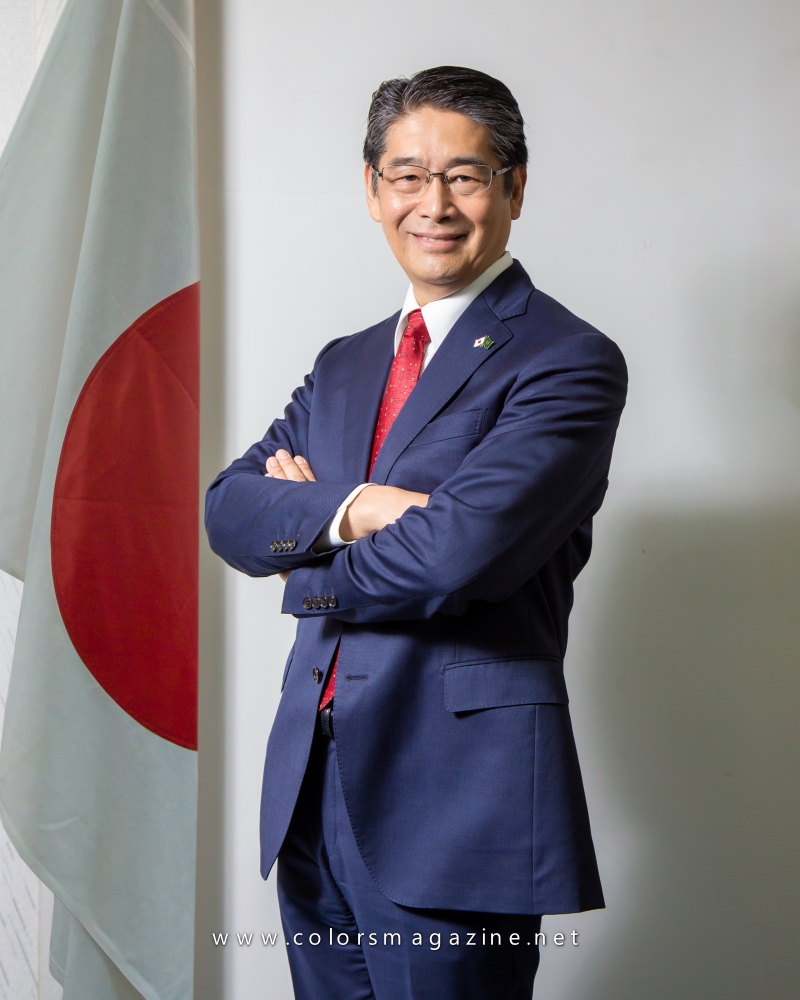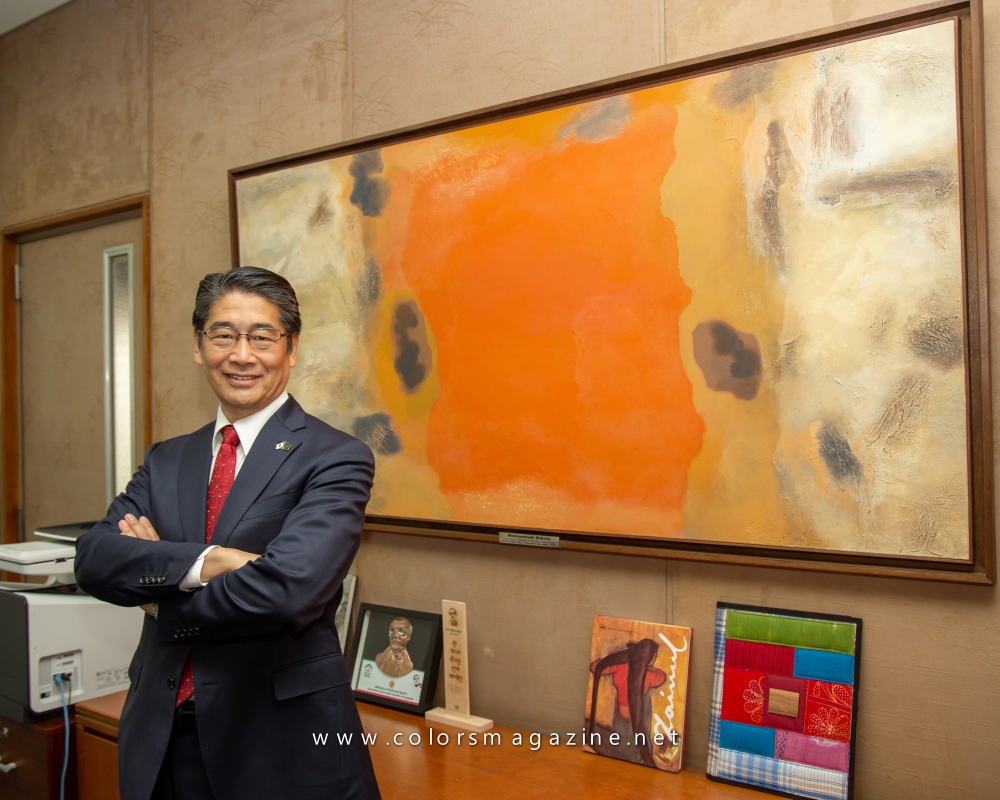Japan to stand by Bangladesh until Vision 2041 is fulfilled
The Japan-Bangladesh relationship has blossomed into one of the most fruitful relations possible. From helping to improve the infrastructure of Bangladesh, mega projects, economic zones, to much more. The Ambassador of Japan to Bangladesh pieces together how Japan will be supporting Bangladesh throughout its journey.
By ITO Naoki

This year marks the 50th anniversary of establishing diplomatic relations between Japan and Bangladesh. I am pleased to contribute to this article, anticipating our business partnership will grow in this milestone year. I have been in Bangladesh since October 2019 and amazed to see the dynamism of development. It is palpable that Dhaka is the most vibrant capital in the world.
Though COVID-19 hit the economy of every country, the Bangladeshi economy has shown its resilience and bounced back remarkably. Bangladesh’s exports recovered, led by RMG. Its export to Japan from July to October increased by 13.4%, compared to the same period a year ago. The World Bank revised the forecast and expected the country’s GDP to grow at 6.4% this fiscal year. Undoubtedly, Bangladesh will be the fastest-growing economy in Asia in this decade.
I understand that the per capita GDP of Bangladesh will exceed 3,000 USD shortly. Then, the increasing middle class and affluent households will enjoy mass consumption and purchase more home appliances, electronics, and automobiles. In 2030, the country will join the top 25 economies globally. The economy is truly taking off. I would say the new brand image of Bangladesh is in the making – Bengal Tiger with high growth potential and the 21st-century role model of development.
Against the background of Bangladesh’s epic economic growth, investment from Japan has more than tripled in the past ten years. I expect more and more Japanese companies will come to Bangladesh. According to the recent JETRO survey, over 60% of Japanese companies are willing to expand their business operations in the coming two years.
Indeed, Japanese companies such as JTI and Softbank have made large-scale investments. Softbank invested $250 million into bKash. Those cases have demonstrated confidence in the economic situation. In Ishwardi EPZ, Matsuoka’s Japanese apparel manufacturing company invested $25 million in expanding business to create 3,500 employees last year. Currently, Mitsubishi Motors Company is undertaking a Feasibility Study with the Ministry of Industries to set up a CKD automobile plant. Once the company makes an investment decision this year to produce national brand cars, the automotive sector will become a key driving force of development. Last November, K2 Logistics and Beximco Health signed a production and quality consultation agreement, which opened a new avenue of industrial collaboration.
The corona pandemic disrupted the supply chain. When the situation is normalized later in the year, companies accelerate efforts to diversify manufacturing bases for a resilient production network in the region. Bangladesh will be in an advantageous position, as it is placed at the node of South and Southeast Asia. It can make the most of the strategic location to connect the two markets and be integrated into global supply chains. The skilled labor force maintains wage competitiveness. Its sound and prudent macroeconomic management will only strengthen the advantage. The possibility that Bangladesh establishes itself as a “China plus one” investment destination and attracts big FDIs is insight in 2022.
Araihazar special economic zone will open in December. The Japan-Bangladesh joint venture will be ready to house international companies. Despite the pandemic, I am pleased to learn that many companies have already shown interest in considering investing due to the facilities and incentives available there. I expect 100 companies will make investments worth $1 billion. Once Araihazar has become successful, Mirsharai SEZ will develop as another Japanese SEZ.
Despite the pandemic, large-scale infrastructure projects that symbolize Bangladesh’s economic leap and our bilateral cooperation through JICA are steadily underway. Last year, Bangladesh became the largest recipient of Japanese ODA, standing at $3.4 billion. The two countries are joining hands in building the Bay of Bengal Industrial Growth Corridor (BIG-B), launched by Prime Minister Sheikh Hasina and Prime Minister ABE Shinzo in 2014.
Dhaka Metro (Line 6) will start its commercial operation in December. The JICA’s yen-loan project will provide citizens of Dhaka with a new mode of public transportation, the first electrified train. It was heartening that several cricketers in the national team put up FB stories of the Metro. When he went to see a test run at Uttara Central Station, Habibul Bashar, former captain, told me that this was a dream-come-true moment!
The Dhaka Airport Terminal 3 will be the new face of the nation and offer better facilities for immigration and customs. Matabari, the first deep-sea port, has already had 50 ships anchored for power station construction. Bangabandhu Railway Bridge, which will enhance connectivity between Dhaka and the western part, is also making progress. Though infrastructure used to be the bottleneck of investment in Bangladesh, its landscape will be different in five years. Quality infrastructure projects could add advantages to the investment climate.
Nevertheless, Bangladesh, as it graduates from the LDC status in 2026, needs to cope with new challenges. Industries must be diversified. Introducing new technologies is necessary for productivity growth, and workforce development with skills will also be essential. Young and talented Bangladeshis should be ahead of the curve of innovation. Expanded FDIs will help facilitate the economy to get over those challenges.

To BIDA’s international investment summit successfully held in Dhaka in November, HONDA Taro, Parliamentary Vice-Minister for Foreign Affairs, sent his message. While sharing his high expectation of Japanese companies’ investment in Bangladesh, he stated that some investment-related challenges exist. Those challenges include delays in customs clearance, various taxations, restrictions on telegraphic transfer in import transactions, discrimination of export incentives between domestic and foreign companies, and environment in EPZs and SEZs. To acquire new investment, meeting the challenges of those operating in the country will be no less critical.
In this context, I commend the efforts of various government ministries and agencies over the last one and a half years. I appreciate the progress in regulatory reform, including the working capital loan from the parent company, reduction of registration fee of two-wheelers, container round-use for EPZ companies, and BIDA’s One-Stop Service (OSS). Last November, foreign companies became eligible for a 1 % export cash incentive. This policy is beneficial to all industries.
However, the non-eligibility of foreign companies for a 4 % cash incentive in RMG exports to new markets remains outstanding. The measure is discriminatory between domestic and foreign companies and has not served the policy objective. The idea is to explore markets outside Europe and the United States. Then, those companies owned by Asians should receive the same incentive as domestic companies. They are committed to contributing to the GDP of Bangladesh and ready to export to their home markets.
Another vital issue is the telegraphic transfer (TT). Here in Bangladesh, opening a Letter of Credit (L/C) with banks is standard in settling import transactions. TT can only be allowed for commercial import up to annual transactions of $200,000. TT is agile and less cumbersome. An expert dispatched by JICA found that in only two countries in Asia, TT usage is heavily regulated. One is in Bangladesh and another in Pakistan. The Machine Exporters Association of Japan survey shows that TT restriction is one of the top three predicaments for Japanese companies looking to invest in Bangladesh, along with customs clearance and taxation. I would urge officials to consider de-regulation on the issue. Out-of-box thinking is required.
To meet its challenges, Bangladesh can form bilateral FTAs/EPAs and accede to a regional framework such as the Regional Comprehensive Economic Partnership (RCEP). RCEP came into effect in January 2022. It is high time for Bangladesh to mesh into regional supply chains and to have arrangements on market access, trade in services, investment, trade facilitation, and other related agenda. I understand that the government has shown interest in a joint study with Japan for a bilateral FTA/EPA and consultations for RCEP. Japan would be able to advise officials in the government regarding expertise and negotiating skills on FTAs/EPAs.
The business relationship between Japan and Bangladesh dates back to 1971 when a few Japanese companies started operations in Chittagong. Bangabandhu made a historic visit to Japan in October 1973. In 1974, a business delegation of 24 top executives, headed by NAGANO Shigeo, President of the Japanese Chamber of Commerce, toured Bangladesh and visited many places, including Dhaka, Chittagong, Lake Kaptai, Sylhet, and Khulna. Those symbolic visits at the early stages of our relations steered the course of the subsequent cooperation. Japan supported Jamuna Bridge, Sonargaon Hotel, Chittagong Airport, and Ghorashal Fertilizer Plant to name a few. Currently, more than 30 Japanese companies operate in RMG, light engineering, and other sectors in Chittagong, Karnaphuli, Adamji, Khulna, and Ishwardi EPZs.
Japan and Bangladesh are time-tested friends, and Japan will stand by Bangladesh in its development journey until Vision 2041 is fulfilled. Japan is eager to extend the practical cooperation, including quality infrastructure and connectivity, to Bangladesh, as a partner to realize a “Free and Open Indo-Pacific.” FOIP is the vision to maintain and promote peace, stability, and prosperity in the entire region. We should make our bonds even stronger, and I look forward to working closely with friends in Bangladesh for a win-win partnership. I only wish Bangladesh to be continuously prosperous.




